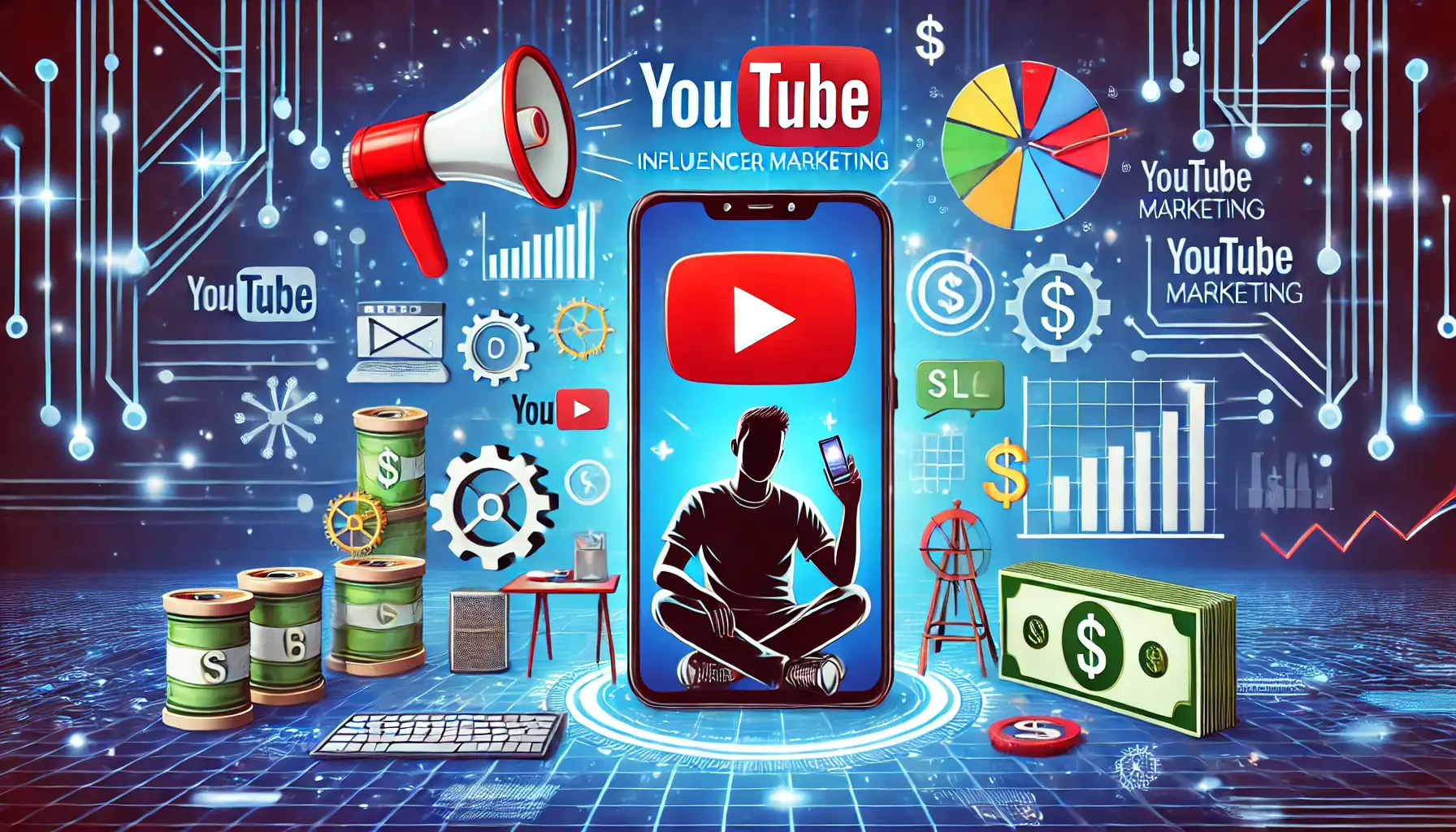In the dynamic world of digital marketing, influencer marketing has emerged as a pivotal strategy, reshaping how brands connect with their audiences.
This marketing approach leverages the credibility and reach of influencers across social media platforms to promote products, services, and brand messages.
As we delve into the evolution of influencer marketing within content creation, it becomes evident how this strategy has transcended traditional advertising, fostering authentic connections between brands and consumers.
The journey of influencer marketing is marked by its adaptability and the innovative ways it integrates into content marketing strategies.
From its nascent stages to its current prominence, influencer marketing has continually evolved, embracing new platforms, technologies, and methodologies.
This evolution reflects a broader shift in consumer behavior, where trust and authenticity have become paramount.
Influencers, by sharing their genuine experiences and insights, offer a human touch to brand promotions, making them more relatable and effective.
- The Roots of Influencer Marketing
- Emerging Trends in Influencer Marketing
- Strategies for Effective Influencer Collaboration
- Challenges in Influencer Marketing
- Impact of Influencer Marketing on Consumer Behavior
- Future Directions of Influencer Marketing
- Optimizing Influencer Marketing Strategies
- Seizing the Future of Influencer Marketing
- Influencer Marketing Evolution FAQs
The Roots of Influencer Marketing
The concept of influencer marketing is not as modern as many might think.
Its origins can be traced back to the early 20th century, where celebrities and public figures endorsed products, lending their credibility to brands.
However, the digital age has significantly amplified its impact, transforming influencer marketing into a key component of content marketing strategies.
This transformation was fueled by the rise of social media platforms, which provided a fertile ground for influencers to grow their audiences and engage with them on a personal level.
As social media evolved, so did the nature of influencer marketing.
Initially dominated by celebrities, the landscape has shifted to include micro and nano influencers—individuals with smaller, but highly engaged and niche audiences.
This democratization of influence has allowed brands to target specific demographics with unprecedented precision, making influencer marketing a versatile tool in the content marketing arsenal.
Integration with Content Marketing
Influencer marketing’s integration into content marketing strategies has been seamless and symbiotic.
Influencers, armed with a deep understanding of their audience’s preferences and behaviors, create content that resonates on a personal level.
This content, whether it’s a blog post, a social media update, or a video, serves as a conduit for brand messages, wrapped in narratives that engage and inspire.
The authenticity and creativity of influencer-generated content have proven to be highly effective in capturing audience attention and fostering brand loyalty.
Moreover, the collaborative nature of influencer marketing campaigns encourages a co-creation process between brands and influencers.
This partnership not only enhances the content’s relevance and appeal but also amplifies its reach through the influencer’s network.
Such collaborations are a testament to the power of combining influencer insights with brand objectives, resulting in content that is both engaging and strategically aligned with marketing goals.
The evolution of influencer marketing in content highlights the shift towards authenticity, engagement, and strategic collaborations, underscoring its role as a cornerstone of modern content marketing strategies.
Emerging Trends in Influencer Marketing
The landscape of influencer marketing is constantly evolving, with new trends emerging that redefine how brands and influencers collaborate to produce content.
These trends not only reflect changes in technology and social media platforms but also shifts in consumer expectations and behavior.
Understanding these trends is crucial for marketers aiming to stay ahead in the competitive digital space.
Focus on Authenticity and Transparency
Authenticity has become the cornerstone of successful influencer marketing campaigns.
Consumers are increasingly savvy and can easily distinguish between genuine endorsements and forced promotions.
As a result, there’s a growing emphasis on partnerships that reflect true alignment between the influencer’s values and the brand’s ethos.
Transparency is equally important, with clear communication about sponsored content becoming a legal and ethical necessity.
This trend towards authenticity and transparency not only builds trust with audiences but also enhances the credibility of both the influencer and the brand.
Rise of Video Content
Video content continues to dominate social media, with platforms like TikTok, Instagram Reels, and YouTube Shorts becoming integral to influencer marketing strategies.
The dynamic and engaging nature of video allows influencers to create more impactful and relatable content.
Brands are leveraging these formats to showcase their products in action, tell compelling stories, and engage with audiences in a more interactive way.
The popularity of video content is also driven by its ability to convey emotions and experiences more effectively than static images or text.
- Increased Use of Data Analytics: Data-driven strategies are becoming more prevalent in influencer marketing. Brands and influencers alike are utilizing analytics tools to gain insights into audience behavior, engagement rates, and campaign performance. This data is invaluable for optimizing content, targeting the right demographics, and measuring ROI.
- Micro and Nano Influencers Gain Ground: There’s a growing recognition of the value offered by micro and nano influencers. These individuals may have smaller followings, but their audiences are often more engaged and loyal. Brands are partnering with these influencers for targeted campaigns, appreciating their ability to foster genuine connections and drive meaningful engagement.
- Long-term Partnerships: Instead of one-off campaigns, brands and influencers are increasingly entering into long-term partnerships. These collaborations allow for deeper storytelling, consistency in messaging, and the opportunity to build stronger relationships with audiences. Long-term partnerships also enable influencers to become true ambassadors for the brand, adding authenticity to their endorsements.
Embracing these emerging trends in influencer marketing is essential for brands looking to create impactful, authentic, and engaging content that resonates with their target audience.
Strategies for Effective Influencer Collaboration
Creating a successful influencer marketing campaign involves more than just selecting influencers with large followings.
It requires strategic planning, clear communication, and a mutual understanding of goals and expectations.
Here are key strategies that brands can employ to ensure effective collaboration with influencers and maximize the impact of their influencer marketing efforts.
Choosing the Right Influencers
Finding the right influencer is the first step towards a successful campaign.
Brands should look beyond follower counts and consider factors such as audience engagement, content quality, and alignment with brand values.
Utilizing social listening tools and data analytics can help identify influencers who genuinely resonate with the target audience.
Additionally, considering influencers who are already fans of the brand can add an extra layer of authenticity to the campaign.
Setting Clear Objectives and Expectations
Before initiating a campaign, it’s crucial for brands and influencers to have a clear understanding of the campaign’s objectives and expectations.
Whether the goal is to increase brand awareness, drive sales, or engage a new demographic, having well-defined objectives ensures that both parties are aligned.
This clarity helps in creating content that is not only authentic but also strategically focused on achieving the desired outcomes.
- Collaborative Content Creation: Successful influencer marketing thrives on creativity and collaboration. Brands should work closely with influencers to brainstorm content ideas that play to the influencer’s strengths while also highlighting the brand’s message. This collaborative approach ensures that the content is engaging, authentic, and well-received by the audience.
- Utilizing Multiple Platforms: To maximize reach and engagement, brands should consider campaigns that span across multiple social media platforms. Influencers often have presence on various platforms, and leveraging this can help brands tap into different segments of their audience. Tailoring content to fit the unique characteristics of each platform can also enhance its effectiveness.
- Measuring and Analyzing Results: Establishing key performance indicators (KPIs) and regularly monitoring campaign performance is essential for understanding its impact. Metrics such as engagement rates, conversion rates, and audience growth can provide valuable insights into what works and what doesn’t. This data-driven approach allows brands to refine their strategies and make informed decisions for future campaigns.
Effective influencer collaboration requires a strategic approach, focusing on choosing the right influencers, setting clear objectives, and fostering a creative and mutually beneficial partnership.
Challenges in Influencer Marketing
While influencer marketing offers numerous benefits, it also comes with its set of challenges.
Navigating these obstacles is crucial for brands aiming to leverage influencer marketing effectively.
Understanding these challenges can help brands prepare and implement strategies to mitigate potential issues, ensuring smoother campaigns and more fruitful collaborations.
Finding Authentic Influencers
One of the primary challenges brands face is identifying influencers who are genuinely aligned with their brand values and ethos.
With the rise of influencer marketing, the market has seen an influx of influencers, some of whom may prioritize monetary gains over authentic endorsements.
Brands must conduct thorough research to find influencers who truly resonate with their products and audience, ensuring the authenticity of the campaign.
Maintaining Brand Consistency
Ensuring that influencer-generated content aligns with the brand’s overall messaging and aesthetic can be challenging.
While it’s important to give influencers creative freedom, brands also need to maintain a consistent brand voice and image across all marketing channels.
Establishing clear brand guidelines and maintaining open communication with influencers can help achieve this balance between creativity and consistency.
- Measuring ROI: Quantifying the return on investment (ROI) of influencer marketing campaigns can be complex. Unlike traditional advertising, influencer marketing involves various metrics such as engagement rates, brand sentiment, and conversion rates, which can be difficult to track and attribute directly to sales. Employing advanced analytics tools and setting specific KPIs can aid in accurately measuring the campaign’s impact.
- Navigating Platform Changes: Social media platforms are constantly evolving, with frequent updates to algorithms and policies. These changes can affect the visibility and reach of influencer content, posing a challenge for brands relying on these platforms for marketing. Staying updated with platform trends and adapting strategies accordingly is essential for maintaining campaign effectiveness.
- Ensuring Compliance with Regulations: The legal landscape of influencer marketing is still developing, with regulations around disclosures and endorsements becoming increasingly stringent. Brands and influencers must navigate these regulations carefully to avoid penalties and maintain trust with their audience. Understanding and adhering to the guidelines set by regulatory bodies is crucial for conducting lawful and ethical influencer marketing campaigns.
Despite its challenges, influencer marketing remains a powerful tool for brands. By addressing these obstacles head-on, brands can enhance the effectiveness of their influencer marketing strategies and achieve their marketing objectives.
Impact of Influencer Marketing on Consumer Behavior
Influencer marketing has significantly altered the landscape of consumer behavior, shaping how individuals discover, interact with, and make decisions about brands and products.
The persuasive power of influencers stems from their ability to forge strong connections with their audience, making their endorsements more impactful than traditional advertising methods.
Understanding this impact is crucial for brands looking to harness the full potential of influencer marketing.
Enhanced Brand Discovery and Awareness
Influencers serve as a bridge between brands and potential customers, introducing their followers to new products and services.
Through creative and engaging content, influencers can spark interest and curiosity about a brand, significantly boosting brand discovery and awareness.
This exposure is particularly valuable in today’s crowded market, where consumers are bombarded with countless marketing messages daily.
Increased Trust and Credibility
Trust plays a pivotal role in consumer decision-making, and influencers have become trusted sources of information and recommendations.
The personal connection influencers share with their audience lends credibility to their endorsements, making consumers more likely to trust their opinions over traditional advertisements.
This trust is further reinforced when influencers share their genuine experiences and feedback about a product, making their endorsements feel more authentic and reliable.
- Driving Purchase Decisions: Influencers can significantly sway consumer purchase decisions. Their recommendations often serve as a form of social proof, reassuring consumers about the quality and value of a product. By showcasing how a product fits into their lifestyle or solves a particular problem, influencers can effectively persuade their followers to make a purchase, thereby driving sales for the brand.
- Shaping Brand Perceptions: Influencers have the power to shape and influence how their audience perceives a brand. Positive endorsements can enhance a brand’s image, associating it with desirable qualities such as innovation, quality, or sustainability. Conversely, negative experiences shared by influencers can impact brand perceptions adversely. Therefore, brands must carefully select influencers whose values and audience align with their own.
- Encouraging Engagement and Interaction: Influencer marketing fosters higher levels of engagement and interaction between brands and consumers. Influencers often encourage their followers to share their thoughts, ask questions, or participate in challenges and giveaways. This interaction not only strengthens the relationship between the influencer and their audience but also between the audience and the brand, enhancing customer loyalty and engagement.
The impact of influencer marketing on consumer behavior underscores its effectiveness as a marketing strategy. By leveraging influencers, brands can enhance brand discovery, build trust, drive purchase decisions, shape brand perceptions, and encourage engagement and interaction among their target audience.
Future Directions of Influencer Marketing
The realm of influencer marketing is in a state of constant evolution, driven by changes in consumer preferences, technological advancements, and the dynamic landscape of social media.
As we look towards the future, several key directions are emerging, promising to shape the strategies and outcomes of influencer marketing campaigns.
Staying ahead of these trends is essential for brands aiming to leverage influencer marketing effectively in the coming years.
Integration with Emerging Technologies
The future of influencer marketing is poised to be revolutionized by emerging technologies such as artificial intelligence (AI), augmented reality (AR), and virtual reality (VR).
These technologies offer new avenues for creating immersive and interactive content, enabling influencers to engage with their audience in innovative ways.
For instance, AR filters and VR experiences can transform traditional influencer endorsements into engaging, experiential narratives, enhancing the impact of influencer campaigns.
Expansion into New Platforms and Formats
As the digital landscape continues to expand, new social media platforms and content formats are emerging, offering fresh opportunities for influencer marketing.
Brands and influencers alike must stay agile, exploring these new platforms to reach untapped audiences.
From short-form video platforms like TikTok to audio-based social networks like Clubhouse, the future of influencer marketing lies in diversifying across platforms and formats to capture audience attention.
- Emphasis on Authenticity and Values: The trend towards authenticity and shared values is set to intensify, with consumers increasingly seeking out influencers and brands that align with their personal beliefs and lifestyles. Influencer marketing will evolve to focus more on meaningful partnerships that highlight social causes, sustainability, and authenticity, resonating deeply with audience values.
- Greater Focus on Measurement and Analytics: As influencer marketing matures, the emphasis on measuring its effectiveness and ROI will grow. Brands will invest in advanced analytics tools and platforms to track the performance of influencer campaigns, using data to refine strategies, optimize content, and demonstrate the tangible value of influencer marketing efforts.
- Rise of Influencer Communities: The concept of influencer communities, where influencers collaborate and engage with each other and their audiences in a more structured and cohesive manner, is gaining traction. These communities offer a platform for shared learning, content co-creation, and amplifying messages, strengthening the influencer ecosystem and enhancing the impact of influencer marketing campaigns.
The future of influencer marketing is marked by technological innovation, diversification across platforms, a deepened focus on authenticity, advanced analytics for measuring success, and the rise of influencer communities. Brands that anticipate and adapt to these directions will be well-positioned to harness the power of influencer marketing in the evolving digital landscape.
Optimizing Influencer Marketing Strategies
To maximize the effectiveness of influencer marketing campaigns, brands must adopt a strategic approach that goes beyond mere influencer selection.
Optimizing influencer marketing strategies involves a comprehensive understanding of the campaign’s goals, the target audience, and the evolving digital landscape.
By fine-tuning these strategies, brands can ensure that their influencer marketing efforts are not only effective but also yield the highest possible return on investment.
Aligning with Brand Goals and Audience Needs
The first step in optimizing influencer marketing strategies is to ensure that they are closely aligned with the brand’s overarching goals and the specific needs of the target audience.
This alignment guarantees that the influencer content resonates with the audience, driving engagement and achieving the desired outcomes, whether that’s increasing brand awareness, driving sales, or enhancing brand loyalty.
Tailoring content to match the audience’s preferences and interests also helps in creating more meaningful and impactful campaigns.
Leveraging Data for Targeted Campaigns
Utilizing data analytics is crucial for optimizing influencer marketing strategies.
By analyzing data on audience demographics, engagement patterns, and content performance, brands can identify the most effective influencers, content types, and distribution channels for their campaigns.
This data-driven approach allows for more targeted and personalized marketing efforts, significantly increasing the likelihood of campaign success.
- Encouraging Authentic and Creative Content: Authenticity and creativity are key components of successful influencer marketing. Brands should encourage influencers to create content that is true to their personal style and resonates with their audience. This not only enhances the authenticity of the campaign but also fosters creativity, leading to unique and engaging content that stands out in the crowded digital space.
- Adapting to Platform Trends and Changes: Social media platforms are constantly evolving, introducing new features and algorithms that can impact the visibility and effectiveness of influencer content. Brands must stay abreast of these changes and adapt their strategies accordingly. This may involve experimenting with new content formats, exploring emerging platforms, or adjusting content distribution strategies to maximize reach and engagement.
- Building Long-term Influencer Relationships: Developing long-term relationships with influencers can lead to more cohesive and effective campaigns. These partnerships allow influencers to become true brand advocates, deeply understanding the brand’s values and effectively communicating them to their audience. Long-term collaborations also offer opportunities for ongoing engagement and content co-creation, enriching the brand’s content marketing efforts.
Optimizing influencer marketing strategies is a dynamic process that requires alignment with brand goals, leveraging data for targeted campaigns, encouraging authentic content creation, adapting to platform trends, and building long-term influencer relationships. By focusing on these key areas, brands can enhance the effectiveness of their influencer marketing campaigns and achieve their marketing objectives.
Seizing the Future of Influencer Marketing
The journey of influencer marketing from its humble beginnings to its current status as a cornerstone of digital marketing strategies underscores its transformative impact on content creation and consumer engagement.
As brands and influencers navigate the evolving landscape, the future of influencer marketing shines bright, promising innovative ways to connect with audiences and drive meaningful interactions.
Key Takeaways for Brands
In the dynamic world of influencer marketing, staying ahead requires an adaptive and strategic approach.
Brands looking to leverage influencer marketing must focus on:
- Building authentic connections with their audience through carefully selected influencer partnerships.
- Embracing emerging technologies and platforms to create immersive and engaging content experiences.
- Utilizing data analytics to refine strategies and ensure content resonates with the target audience.
- Fostering long-term relationships with influencers to cultivate brand advocates and enhance campaign cohesion.
The Path Forward
As we look to the future, influencer marketing is set to become even more integral to content marketing strategies.
The emphasis on authenticity, creativity, and strategic alignment with brand values will continue to drive the success of influencer campaigns.
Moreover, the integration of new technologies and the exploration of emerging platforms will offer fresh avenues for brands to engage with their audience.
The key to harnessing the full potential of influencer marketing lies in understanding these trends and adapting strategies to align with the evolving digital landscape.
Final Thoughts
In conclusion, the evolution of influencer marketing in content is a testament to its effectiveness in bridging the gap between brands and consumers.
By prioritizing authenticity, leveraging the latest technologies, and fostering meaningful influencer relationships, brands can unlock new opportunities for engagement and growth.
As influencer marketing continues to evolve, its role in shaping consumer behavior and driving brand success will undoubtedly expand, offering exciting possibilities for the future of digital marketing.
Want your website to top Google search rankings? Leave the SEO to our professional agency!
Influencer Marketing Evolution FAQs
Explore commonly asked questions about the evolving landscape of influencer marketing and gain insights into how it’s shaping the future of digital content and brand-consumer relationships.
An influencer is someone with the power to affect purchasing decisions of others because of their authority, knowledge, position, or relationship with their audience, primarily on social media platforms.
There’s no fixed number, but nano influencers can have as few as 1,000 followers, while micro-influencers typically have followers ranging from 1,000 to 100,000, depending on the platform and niche.
Influencer marketing can enhance brand visibility, build trust, drive engagement, and increase conversions by leveraging the authentic connections influencers have with their audience.
Success is measured through engagement rates, conversion rates, reach, brand awareness metrics, and ultimately, the ROI in terms of sales or leads generated from the campaign.
Absolutely. Small businesses can leverage micro and nano influencers for targeted, cost-effective campaigns that reach niche audiences with high engagement rates.
Authenticity is crucial; it builds trust between the influencer and their audience, making endorsements more effective and leading to higher engagement and conversion rates for brands.
Influencer marketing has adapted to new platforms and trends, focusing more on video content, stories, and real-time engagement to maintain relevance and effectiveness.
Future trends include a greater emphasis on video content, the rise of influencer communities, increased use of AI for influencer discovery, and a focus on long-term partnerships.













